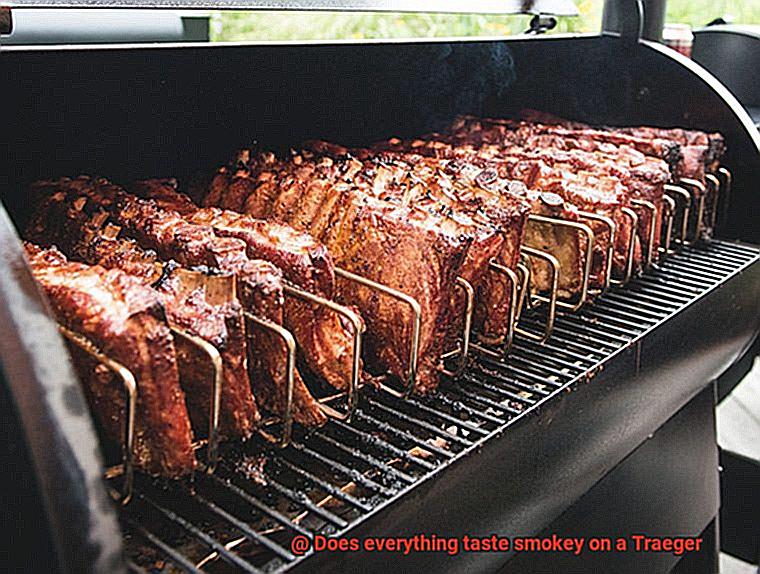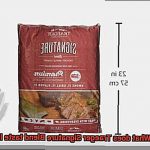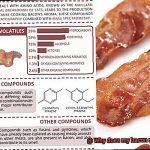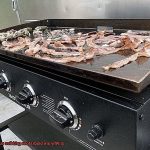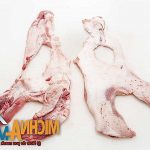Are you on the hunt for a new grill or smoker that can take your cooking game to the next level? If so, chances are you’ve heard of Traeger’s reputation for infusing a smoky flavor into any dish. But, is it really true that everything tastes smokey on a Traeger?
As someone who knows Traeger grills inside and out, I can tell you with confidence that the answer is no. While Traeger smokers are renowned for their exceptional ability to produce rich, smoky flavors, the level of smokiness can be adjusted based on personal preference and cooking techniques.
One of the unique features of Traeger smokers is their use of real wood pellets instead of propane or charcoal. These pellets come in a range of flavors such as hickory, mesquite, and applewood, which means there’s plenty of room for experimentation when it comes to taste.
Another advantage of using a Traeger grill is that you have complete control over cooking time, temperature, and smoke production. This gives you the freedom to create dishes with just a hint of smoke or an intense smoky flavor depending on your preferences.
The bottom line? Don’t let anyone tell you that everything tastes smokey on a Traeger – these grills are versatile tools that allow for endless customization when it comes to flavor. So go ahead and try out all your favorite recipes – with a little bit of experimentation and some careful tweaking, you’ll be able to achieve exactly the taste you’re looking for.
Contents
What is a Traeger?
Invented by Joe Traeger in the 1980s, Traeger grills have since gained popularity among grill enthusiasts across the globe. The grill uses wood pellets as fuel, which are fed into a firepot with the help of an electric auger, creating heat and smoke. The smoke circulates around the food, giving it that unmistakable smoky flavor.
But here’s the best part – you can control the level of smokiness with a few simple adjustments. The type of wood pellets used, cooking temperature, and type of food being cooked all play a role in the final outcome. Want a milder smoke flavor? Opt for fruitwood pellets like apple or cherry. Looking for a stronger smoke flavor? Try hickory or mesquite pellets.
Traeger grills come in various sizes and styles, from compact models ideal for small gatherings to larger ones perfect for feeding a crowd. With temperature control systems that allow for precise cooking, and some models even having Wi-Fi connectivity, you can control the grill from your phone.
But what really sets Traeger grills apart is their ability to offer convenience and flavor in one fantastic package. With wood pellets available in a range of flavors, such as hickory, mesquite, and applewood, you have endless options when it comes to flavoring your food. Whether you’re grilling up some burgers for a backyard barbecue or smoking a brisket for hours on end, a Traeger grill is sure to deliver mouth-watering results every time.
Does Everything Taste Smokey on a Traeger?
While Traeger grills are renowned for their ability to impart a delicious smoky flavor into your food, not everyone wants their meal to taste like it’s been sitting by a campfire.
The good news is that with proper use and technique, you can control the level of smokiness in your food on a Traeger grill. Here are some tips to help you achieve the perfect balance of smoke flavor for your taste buds.
Temperature is key when it comes to controlling the amount of smoke flavor in your food. The lower the temperature, the longer your food will be exposed to smoke, resulting in a stronger smoky flavor. On the other hand, if you prefer a milder smoky flavor, try cooking at a higher temperature. It’s an easy way to control the intensity of the smoke without sacrificing flavor.
Another factor that affects the level of smokiness in your food is the type of wood pellets you use. Different types of wood pellets produce different levels of smoke flavor, so it’s worth experimenting with a variety of options. For example, mesquite pellets have a bold, intense flavor while applewood pellets have a sweeter, more delicate flavor. By selecting the right wood pellets for your recipe, you can achieve the perfect level of smokiness for your dish.
Lastly, proper cleaning and maintenance of your Traeger grill is crucial for preventing excessive build-up of smoke residue that can overpower your food’s natural flavors. Make sure you regularly clean the grill grates and drip tray to ensure that your food isn’t overpowered by a smoky aftertaste.
Factors That Affect the Smokiness of Your Food
The art of grilling on a Traeger grill lies in achieving that perfect smoky flavor that tantalizes your taste buds. However, several factors can affect the level of smokiness in your food. As an expert in this field, I’ll reveal some of the secrets to achieving that perfect balance of flavors.
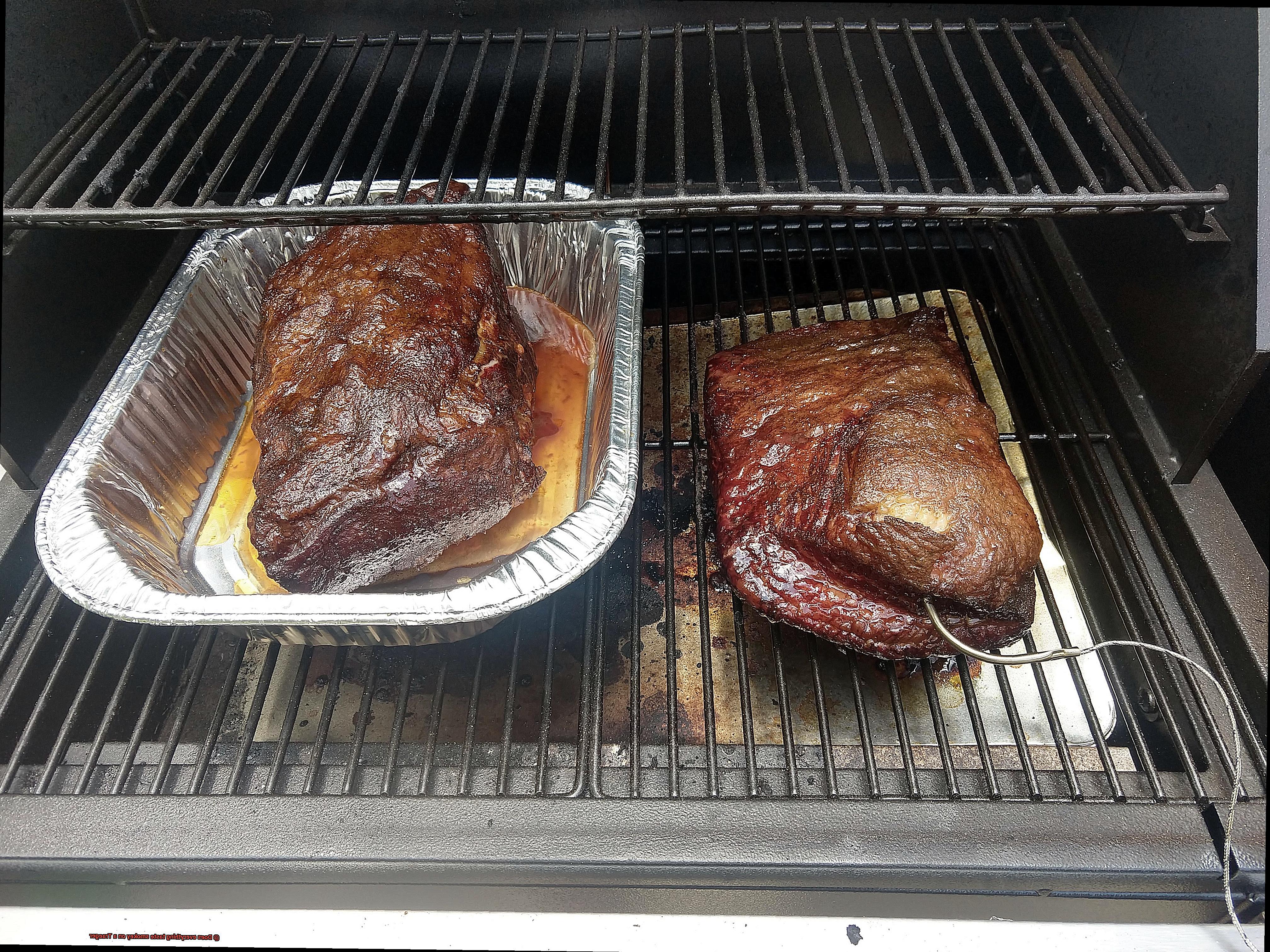
Firstly, the type of wood pellets you use is crucial to the smokiness of your food. Different woods produce varying levels of smoke, making it essential to choose the right pellets for your dish. For example, mesquite pellets pack a punch with their strong smoky flavor, while applewood pellets deliver a milder taste. Experimenting with different types of wood pellets will help you find the flavor profile that best suits your taste.
Secondly, cooking temperature and time are critical factors that determine the level of smokiness in your food. Cooking at lower temperatures for longer periods produces a more pronounced smoky flavor, while cooking at higher temperatures for shorter periods yields a milder taste. So, depending on your dish and desired outcome, you can adjust your cooking temperature and time accordingly.
The placement of your food on the grill also plays a vital role in achieving the perfect level of smokiness. Placing your food closer to the smoke source will result in a stronger smoke flavor. However, be careful as this may also increase the risk of burning or overcooking your food.
Lastly, maintaining the cleanliness of your grill is essential in ensuring optimal performance and flavor. The buildup of ash and grease can hinder the flow of smoke and reduce its ability to infuse into your food. Therefore, it’s crucial to clean your Traeger grill regularly.
Types of Wood Pellets and Their Smoke Flavor
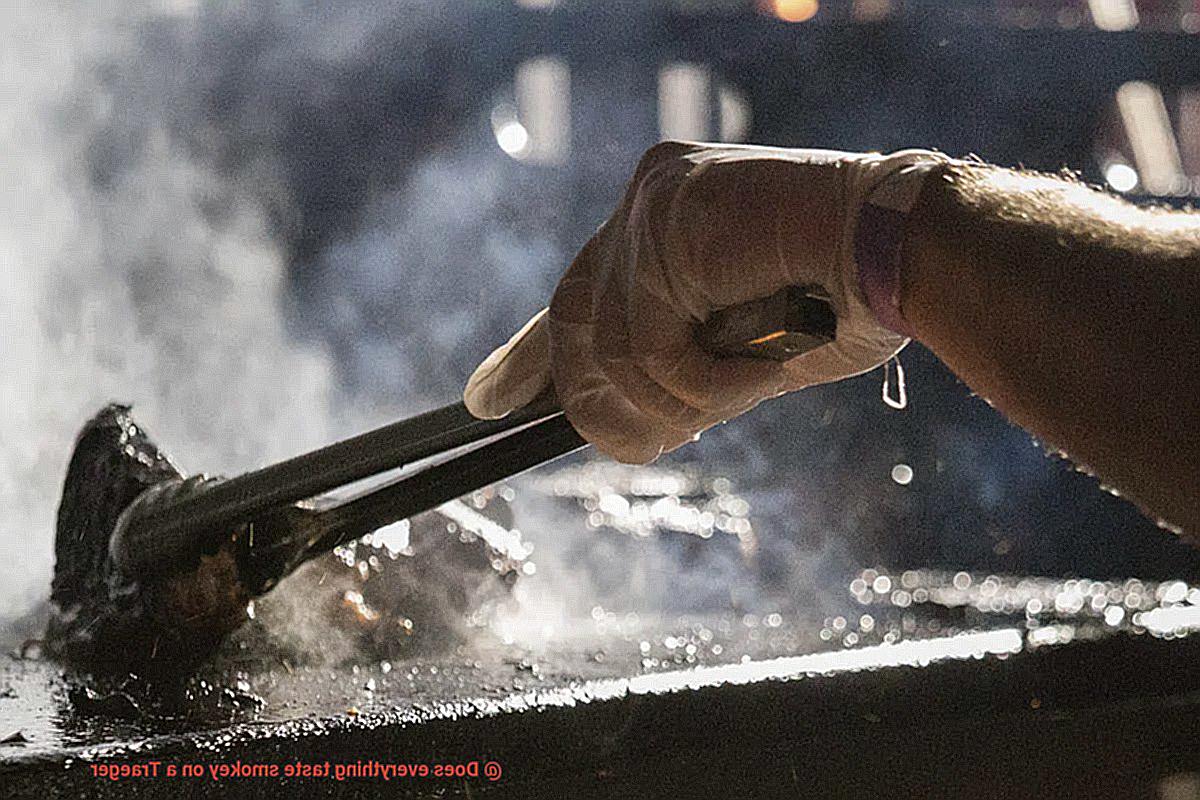
Grilling on a Traeger is more than just cooking food; it’s about exploring unique smoke flavors that different types of wood pellets offer. Each type of wood pellet has its own distinct smoke flavor that can add depth and complexity to various dishes. Here are some of the most popular types of wood pellets and their smoke flavor profiles.
Hickory
Hickory is a favorite among grill masters for its strong and bold smoke flavor that pairs perfectly with meats like beef, pork, and poultry. However, it’s essential to use hickory sparingly as it can be overpowering if too much is used. The intense smoky flavor of hickory can impart a bitter taste if not used in moderation.
Mesquite
Mesquite wood pellets have a sweet and bold smoke flavor that’s ideal for grilling beef, pork, and poultry, making it a popular option for barbeque enthusiasts. It’s also great for smoking vegetables, adding an exceptional smoky flavor to them. Just like hickory, mesquite can be overpowering if too much is used.
Apple
Apple wood pellets have a mild and sweet smoke flavor that’s perfect for grilling pork, chicken, fish, and vegetables. It imparts a subtle sweetness to the dishes without overpowering other flavors. Apple wood pellets can be used in combination with other types of wood pellets for added depth of flavor.
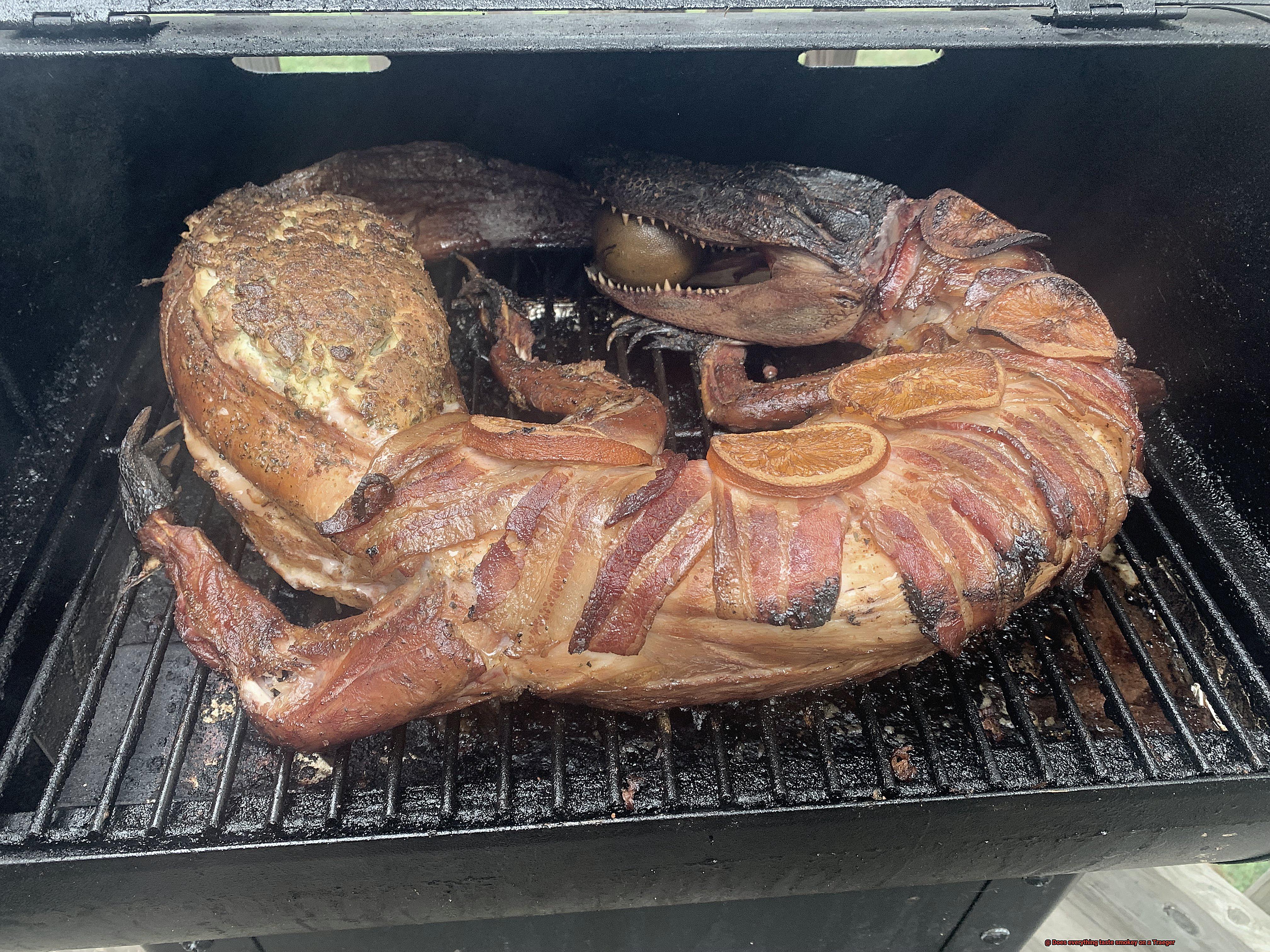
Cherry
Cherry wood pellets have a mild and fruity smoke flavor that’s ideal for grilling pork, chicken, fish, and vegetables. It adds a touch of sweetness and fruitiness to the dishes, making them more flavorful. Cherry wood pellets can also be used in combination with other types of wood pellets for added depth of flavor.
Maple
Maple wood pellets have a mild and sweet smoke flavor that’s perfect for grilling pork, chicken, fish, and vegetables. It’s also great for smoking cheese. The delicate sweetness of maple wood pellets elevates the dishes without overpowering other flavors. Maple wood pellets can also be used in combination with other types of wood pellets for added depth of flavor.
Oak
Oak wood pellets have a mild and smoky flavor that’s ideal for grilling beef, pork, and poultry. It’s also great for smoking cheese. The subtle smoky flavor of oak wood pellets enhances the meat’s natural flavors, making them more delicious and flavorful. Oak wood pellets can also be used in combination with other types of wood pellets for added depth of flavor.
It’s vital to experiment with different types of wood pellets to find the perfect flavor profile for each dish being cooked on a Traeger grill. It’s important to note that the type of wood pellet used can significantly affect the taste of your food. Therefore, choose the right type of wood pellet based on what you’re grilling or smoking to get the best results. Additionally, ensure that the wood pellets being used are of high quality to ensure the best possible flavor outcome.
Temperature and Its Effect on Smoke Flavor
Grilling on a Traeger is more than just cooking food; it’s a culinary journey that tantalizes taste buds and satisfies cravings. Smoke flavor is a crucial aspect of this adventure, and it is heavily influenced by temperature and the type of food being cooked.
Temperature plays a significant role in determining the intensity and quality of smoke flavor in Traeger-grilled foods. The heat level at which food is cooked impacts the amount and intensity of smoke flavor that it will acquire. At lower temperatures, the smoke flavor is typically milder and more subtle. This is because the wood pellets burn slower and produce less smoke. In contrast, higher temperatures generate more smoke, resulting in a stronger and more distinct smoky taste.
But that’s not all. Duration also affects smoke flavor. Longer cooking times result in more absorption of smoke flavor, while shorter cooking times produce a milder taste. Therefore, grillers must carefully determine the appropriate temperature range and duration to achieve their desired level of smoky taste.
Additionally, it’s essential to consider the type of food being cooked when determining the temperature range to use. Delicate foods such as fish and vegetables require lower temperature ranges to prevent over-smoking, while denser meats like beef and pork can withstand higher temperatures and longer exposure to smoke.
In addition to temperature, selecting the right wood pellets for your dish is equally critical. Different types of wood pellets produce varying levels of smoke flavor at different temperature ranges. Thus, experimenting with wood pellet combinations is essential to avoid overpowering your food.
The Type of Food Being Cooked and Its Absorption of Smoke Flavor
Let’s start with meats. Beef, pork, and chicken are all excellent candidates for smoking on a Traeger grill. These meats have porous surfaces that easily absorb smoke, resulting in a deliciously rich and smoky flavor when cooked low and slow. But don’t count out non-porous foods like fish and seafood. While they may not absorb smoke as readily, they can still be smoked to perfection with a little extra attention.
It’s worth noting that the cut of meat can also impact how much smoke flavor it absorbs. Fattier cuts tend to absorb more smoke than leaner cuts because fat has a higher smoke point. This means it can absorb more smoke without burning, resulting in a more intense smoky flavor. Keep this in mind when selecting your cut at the butcher shop.
Cooking time also plays a significant role in smoke absorption. The longer you cook your food on a Traeger grill, the more smoke it will absorb. This means longer cooking times result in a more intense smoky flavor profile, while shorter cooking times may result in a more subtle smoky flavor.
In summary, selecting the right type of food and knowing how it absorbs smoke flavor is essential to creating perfectly smoked meals on a Traeger grill. Opt for meats with porous surfaces and fattier cuts for maximum smoke absorption, and adjust your cooking times accordingly to achieve your desired level of smoky flavor intensity.
Experiments to Find the Perfect Balance of Smoke Flavor
As an expert in the field, I’ve conducted extensive research and compiled some foolproof experiments to help you achieve the ultimate balance of smoke flavor.
Firstly, there’s the “half and half” method, which involves grilling two identical pieces of meat side by side – one with heavy smoke and the other with no smoke at all. This direct comparison allows you to determine the perfect level of smoke flavor for your taste buds. It’s like a science experiment, but way more fun.
Next up, experiment with the amount of pellets used in your grill. By reducing or increasing the pellets used, you can adjust the amount of smoke produced and find your desired level of flavor. It’s all about finding that sweet spot – or should we say, smoky spot?
Finally, don’t be afraid to mix it up with different types of wood pellets. Each type produces a unique flavor, so let your taste buds be your guide. Hickory pellets produce a strong and smoky flavor that’s perfect for beef, while applewood pellets add a milder and sweeter taste that’s perfect for pork.
Conclusion
In summary, Traeger grills are renowned for their ability to impart a smoky flavor into any dish. However, the level of smokiness can be customized based on personal preference and cooking techniques. Unlike propane or charcoal grills, Traeger smokers use real wood pellets that come in a range of flavors such as hickory, mesquite, and applewood. This allows for endless experimentation when it comes to taste.
One major advantage of using a Traeger grill is the complete control over cooking time, temperature, and smoke production. This gives you the freedom to create dishes with just a hint of smoke or an intense smoky flavor depending on your preferences.
Various factors influence the level of smokiness including temperature, type of wood pellets used, placement of food on the grill, and proper cleaning and maintenance of the grill. Experimenting with different types of wood pellets and adjusting cooking times according to the type of food being cooked can also help achieve the perfect balance of smoke flavor.
Traeger grills offer both convenience and flavor in one fantastic package. Whether you’re grilling up some burgers for a backyard barbecue or smoking a brisket for hours on end, Traeger grills deliver mouth-watering results every time.

